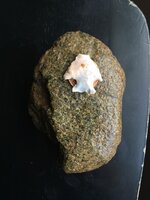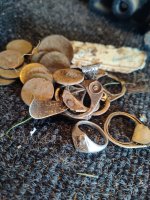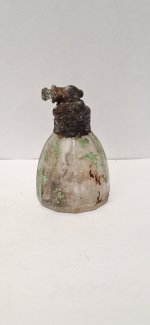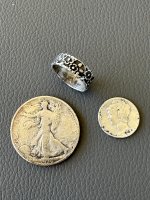I went out for a few hours this afternoon and checked out some fields that I haven't been in in a while. With everyone doing no till it's slim pickens but I did manage to find this nutting stone and arrowhead.
I carried a probe along with me and spent about an hour probing the field in an area that I knew had artifacts because that is where I found these two. It was hard work and I didn't find anything. If anyone has any advice on how to effectively probe for artifacts I would greatly appreciate it!
Thanks!
I carried a probe along with me and spent about an hour probing the field in an area that I knew had artifacts because that is where I found these two. It was hard work and I didn't find anything. If anyone has any advice on how to effectively probe for artifacts I would greatly appreciate it!
Thanks!

Upvote
0





